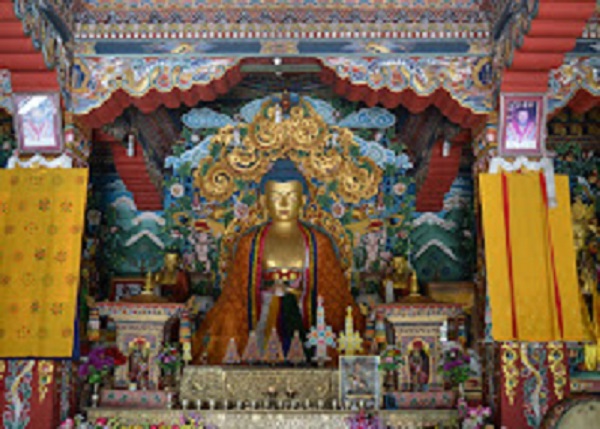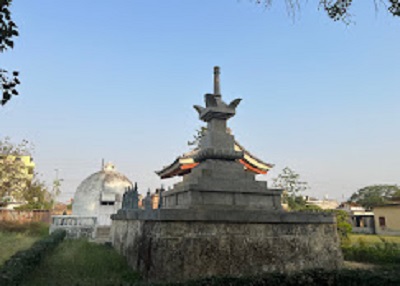Inside Area

The inside of the Japanese Temple in Bodhgaya, also known as the Indosan Nipponji Temple, is a serene and spiritually uplifting space. As you step in, you are greeted by a sense of deep peace and stillness. At the center of the hall sits a beautiful golden statue of Lord Buddha in a meditative posture, symbolizing enlightenment and inner peace. The walls of the temple are adorned with Japanese-style murals and paintings that artistically depict the major events from Buddha’s life — from his birth to his path of enlightenment. The architecture inside reflects traditional Japanese simplicity, using polished wood, clean design, and soft natural light. The floor is often lined with cushions where monks and visitors sit to meditate or chant. During prayer hours, the sound of Japanese sutras being chanted creates a calm and sacred atmosphere. This tranquil interior invites reflection, mindfulness, and a true connection with Buddhist teachings.
Other Attractions
Apart from the peaceful beauty of the Japanese Temple itself, the area around it offers several attractions that enhance the spiritual and cultural experience of Bodhgaya. Just a short walk away is the Mahabodhi Temple, the sacred site where Lord Buddha attained enlightenment. Visitors can also explore the 80-feet Buddha statue, one of the tallest in India, which stands as a grand symbol of peace and meditation. Nearby are other international monasteries such as the Thai Temple, Tibetan Monastery, Bhutanese Temple, and Chinese Temple, each reflecting unique architectural styles and traditions of Buddhist countries.

Distance From
Gaya Railway Station
The distance from Gaya Railway Station to the Japanese Temple (Indosan Nipponji) in Bodh Gaya is approximately 14 km

Gaya Airport
The distance from Gaya International Airport to Japanese Temple (IndosanNipponji) in Bodh Gaya is approximately 12 km,

Gaya Bus Stand
The distance from Bus Stand (Gaya city) to the Japanese Temple (Indosan Nipponji) in Bodh Gaya is approximately

Our Review
The Japanese Temple in Bodhgaya is surrounded by many other spiritual and cultural attractions. Just nearby is the famous Mahabodhi Temple, where Lord Buddha attained enlightenment. A short walk away stands the impressive 80-feet Buddha statue, a major symbol of peace. Visitors can also explore various international monasteries such as Thai, Tibetan, Chinese, and Bhutanese temples, each reflecting the unique traditions of their countries. The sacred Bodhi Tree, Meditation Park, and Sujata Stupa add to the spiritual journey. These attractions together create a peaceful, inspiring atmosphere, making the area around the Japanese Temple a rich and memorable experience. Ask ChatGPT
